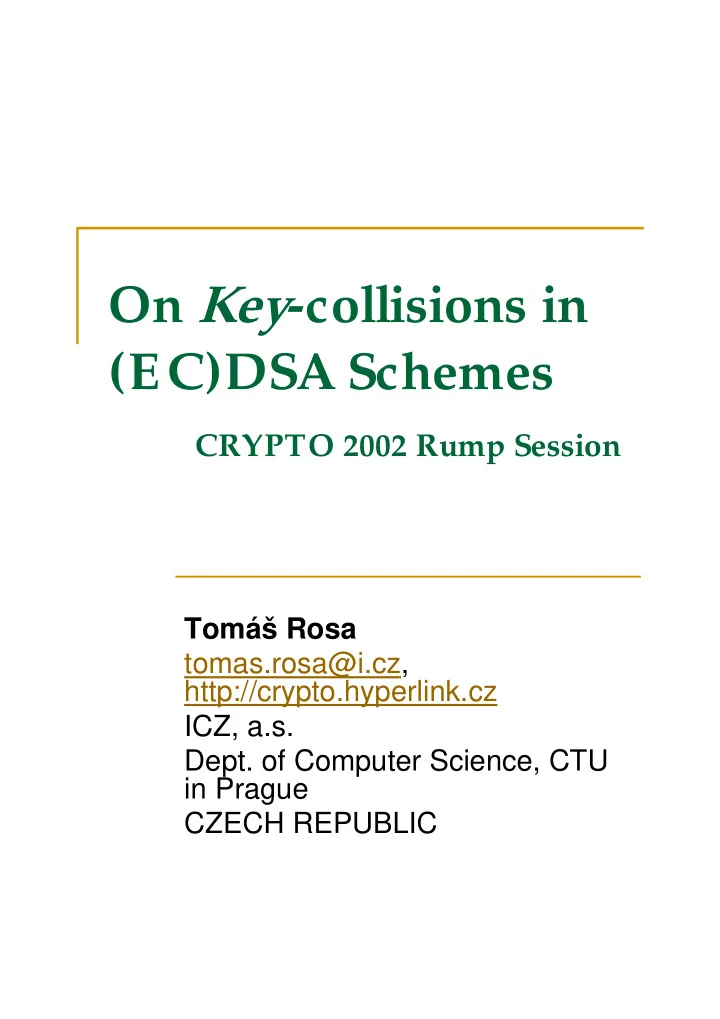

On Key -collisions in (EC)DSA Schemes CRYPTO 2002 Rump Session Tomáš Rosa tomas.rosa@i.cz, http://crypto.hyperlink.cz ICZ, a.s. Dept. of Computer Science, CTU in Prague CZECH REPUBLIC
On Key -collisions in (EC)DSA Schemes (1) � Let ( m , S ) be a message and its signature. � Let us have two different public keys ( Pub A , Pub B ), such that: � VER PUB_A ( m , S ) = VER PUP_B ( m , S ) = VALID_SIGNATURE. � Then ( Pub A , Pub B ) is said to be a key -collision ( k -collision). � The signature S is referred to as a k -colliding signature. Tomáš Rosa, tomas.rosa@ i.cz
On Key -collisions in (EC)DSA Schemes (2) � An ability to find a k -collision for an arbitrary ( m , S ) may lead to attacks on a non-repudiation service. � Leads to: “It has been somebody else, who has signed that message...” � There are also non-cooperatively computable k -collisions. � Leads to: “It has been me, who has signed that message, not her/him...” Tomáš Rosa, tomas.rosa@ i.cz
On Key -collisions in (EC)DSA Schemes (3) � Non-cooperatively computable k - collisions are trivially feasible in DSA for an arbitrary ( m , S ) and Pub A . � The algorithm uses a partial inversion of the DSA instance generation process. � It exploits the lack of restrictions on the value of the subgroup generator g . � Due to common algebraic properties this attack easily extends on ECDSA too. Tomáš Rosa, tomas.rosa@ i.cz
On Key -collisions in (EC)DSA Schemes (4) � Countermeasures � Main: Fix the FIPS 186-2, or make own proprietary extensions; the value of g should be associated with a certificate of its proper generation. � Temporary: Include detailed public key information into the data to be signed. � Must be done carefully and with respect to a particular PKI protocol. � Still vulnerable through a 2 nd order k - collision: different messages, different keys, the same signature. Tomáš Rosa, tomas.rosa@ i.cz
Recommend
More recommend